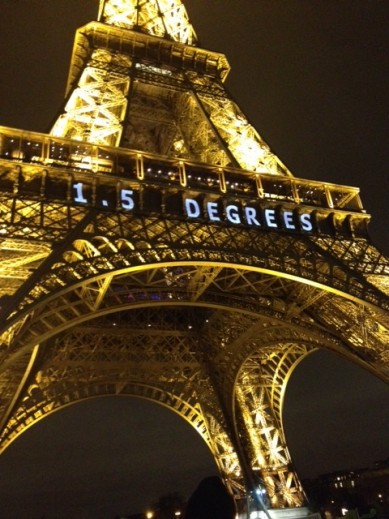195 Nations Set Path to Keep Temperature Rise Well Below 2 Degrees Celsius
Paris, 12 December 2015 – An historic agreement to combat climate change and unleash actions and investment towards a low carbon, resilient and sustainable future was agreed by 195 nations in Paris today.
The Paris Agreement for the first time brings all nations into a common cause based on their historic, current and future responsibilities.
The universal agreement’s main aim is to keep a global temperature rise this century well below 2 degrees Celsius and to drive efforts to limit the temperature increase even further to 1.5 degrees Celsius above pre-industrial levels.
The 1.5 degree Celsius limit is a significantly safer defense line against the worst impacts of a changing climate.
Additionally, the agreement aims to strengthen the ability to deal with the impacts of climate change.
To reach these ambitious and important goals, appropriate financial flows will be put in place, thus making stronger action by developing countries and the most vulnerable possible, in line with their own national objectives.
Agreement Captures Essential Elements to Drive Action Forward
The Paris Agreement and the outcomes of the UN climate conference (COP21) cover all the crucial areas identified as essential for a landmark conclusion:
- Mitigation – reducing emissions fast enough to achieve the temperature goal
- A transparency system and global stock-take – accounting for climate action
- Adaptation – strengthening ability of countries to deal with climate impacts
- Loss and damage – strengthening ability to recover from climate impacts
- Support – including finance, for nations to build clean, resilient futures
As well as setting a long-term direction, countries will peak their emissions as soon as possible and continue to submit national climate action plans that detail their future objectives to address climate change.
This builds on the momentum of the unprecedented effort which has so far seen 188 countries contribute climate action plans to the new agreement, which will dramatically slow the pace of global greenhouse gas emissions.
The new agreement also establishes the principle that future national plans will be no less ambitious than existing ones, which means these 188 climate action plans provide a firm floor and foundation for higher ambition.
Countries will submit updated climate plans – called nationally determined contributions (NDCs) – every five years, thereby steadily increasing their ambition in the long-term.
Climate action will also be taken forward in the period before 2020. Countries will continue to engage in a process on mitigation opportunities and will put added focus on adaptation opportunities. Additionally, they will work to define a clear roadmap on ratcheting up climate finance to USD 100 billion by 2020
This is further underlined by the agreement’s robust transparency and accounting system, which will provide clarity on countries’ implementation efforts, with flexibility for countries’ differing capabilities.
 The Paris Agreement underwrites adequate support to developing nations and establishes a global goal to significantly strengthen adaptation to climate change through support and international cooperation.
The Paris Agreement underwrites adequate support to developing nations and establishes a global goal to significantly strengthen adaptation to climate change through support and international cooperation.
Following the adoption of the Paris Agreement by the COP (Conference of the Parties), it will be deposited at the UN in New York and be opened for one year for signature on 22 April 2016–Mother Earth Day.
The agreement will enter into force after 55 countries that account for at least 55% of global emissions have deposited their instruments of ratification.
- All countries will submit adaptation communications, in which they may detail their adaptation priorities, support needs and plans. Developing countries will receive increased support for adaptation actions and the adequacy of this support will be assessed.
- The existing Warsaw International Mechanism on Loss and Damage will be significantly strengthened.
- The agreement includes a robust transparency framework for both action and support. The framework will provide clarity on countries’ mitigation and adaptation actions, as well as the provision of support. At the same time, it recognizes that Least Developed Countries and Small Island Developing States have special circumstances.
- The agreement includes a global stocktake starting in 2023 to assess the collective progress towards the goals of the agreement. The stocktake will be done every five years.
- The agreement includes a compliance mechanism, overseen by a committee of experts that operates in a non-punitive way.
The COP also closed on a number of technical issues.
- Under the Kyoto Protocol, there is now a clear and transparent accounting method for carry-over credits for the second commitment period, creating a clear set of rules.
- The first round of international assessment and review process (IAR) that was launched in 2014 was successfully completed.
- A number of technical and implementation issues related to the existing arrangements on technology, adaptation, action for climate empowerment and capacity building were also successfully concluded.
